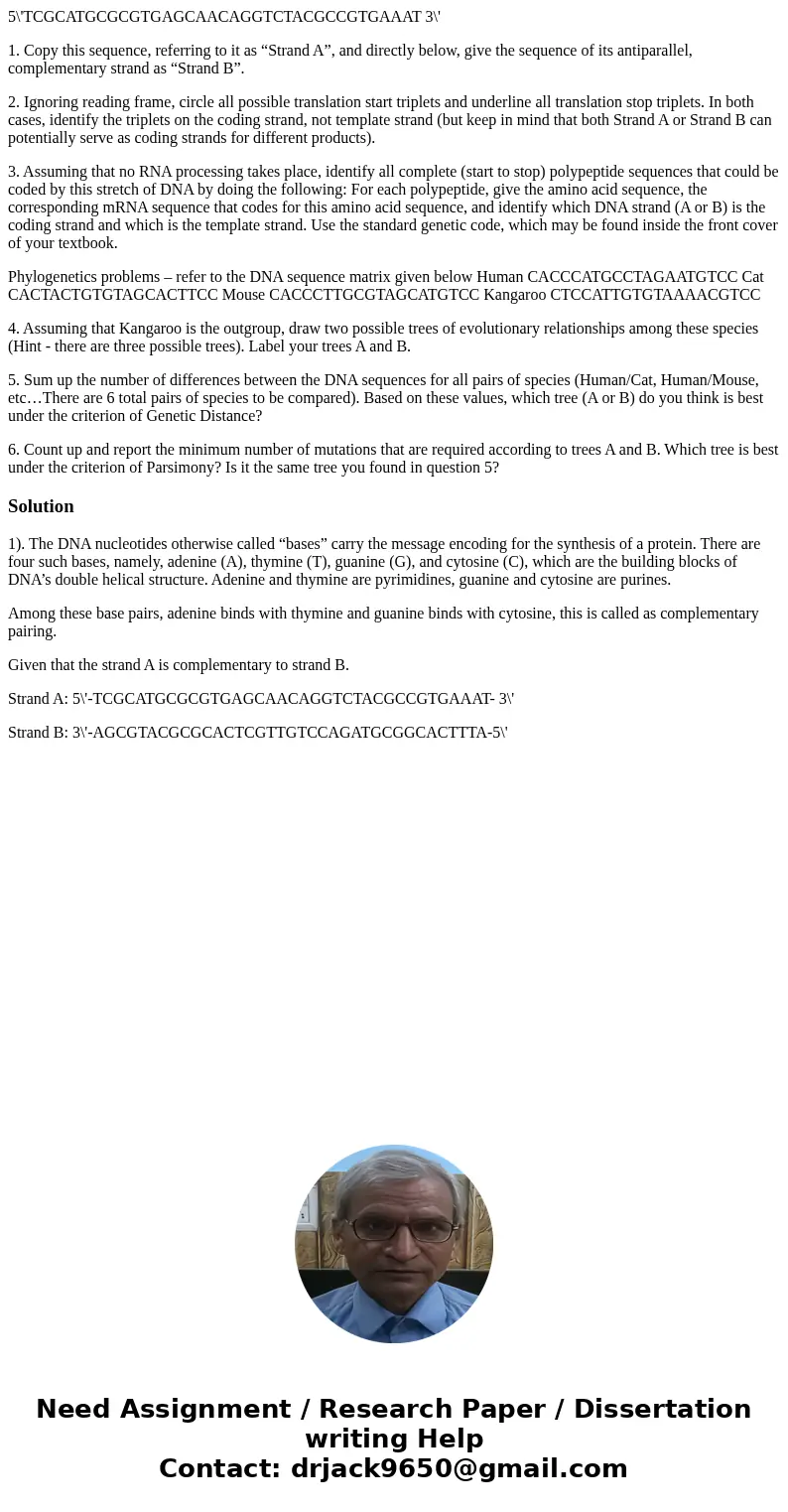5TCGCATGCGCGTGAGCAACAGGTCTACGCCGTGAAAT 3 1 Copy this sequenc
5\'TCGCATGCGCGTGAGCAACAGGTCTACGCCGTGAAAT 3\'
1. Copy this sequence, referring to it as “Strand A”, and directly below, give the sequence of its antiparallel, complementary strand as “Strand B”.
2. Ignoring reading frame, circle all possible translation start triplets and underline all translation stop triplets. In both cases, identify the triplets on the coding strand, not template strand (but keep in mind that both Strand A or Strand B can potentially serve as coding strands for different products).
3. Assuming that no RNA processing takes place, identify all complete (start to stop) polypeptide sequences that could be coded by this stretch of DNA by doing the following: For each polypeptide, give the amino acid sequence, the corresponding mRNA sequence that codes for this amino acid sequence, and identify which DNA strand (A or B) is the coding strand and which is the template strand. Use the standard genetic code, which may be found inside the front cover of your textbook.
Phylogenetics problems – refer to the DNA sequence matrix given below Human CACCCATGCCTAGAATGTCC Cat CACTACTGTGTAGCACTTCC Mouse CACCCTTGCGTAGCATGTCC Kangaroo CTCCATTGTGTAAAACGTCC
4. Assuming that Kangaroo is the outgroup, draw two possible trees of evolutionary relationships among these species (Hint - there are three possible trees). Label your trees A and B.
5. Sum up the number of differences between the DNA sequences for all pairs of species (Human/Cat, Human/Mouse, etc…There are 6 total pairs of species to be compared). Based on these values, which tree (A or B) do you think is best under the criterion of Genetic Distance?
6. Count up and report the minimum number of mutations that are required according to trees A and B. Which tree is best under the criterion of Parsimony? Is it the same tree you found in question 5?
Solution
1). The DNA nucleotides otherwise called “bases” carry the message encoding for the synthesis of a protein. There are four such bases, namely, adenine (A), thymine (T), guanine (G), and cytosine (C), which are the building blocks of DNA’s double helical structure. Adenine and thymine are pyrimidines, guanine and cytosine are purines.
Among these base pairs, adenine binds with thymine and guanine binds with cytosine, this is called as complementary pairing.
Given that the strand A is complementary to strand B.
Strand A: 5\'-TCGCATGCGCGTGAGCAACAGGTCTACGCCGTGAAAT- 3\'
Strand B: 3\'-AGCGTACGCGCACTCGTTGTCCAGATGCGGCACTTTA-5\'

 Homework Sourse
Homework Sourse